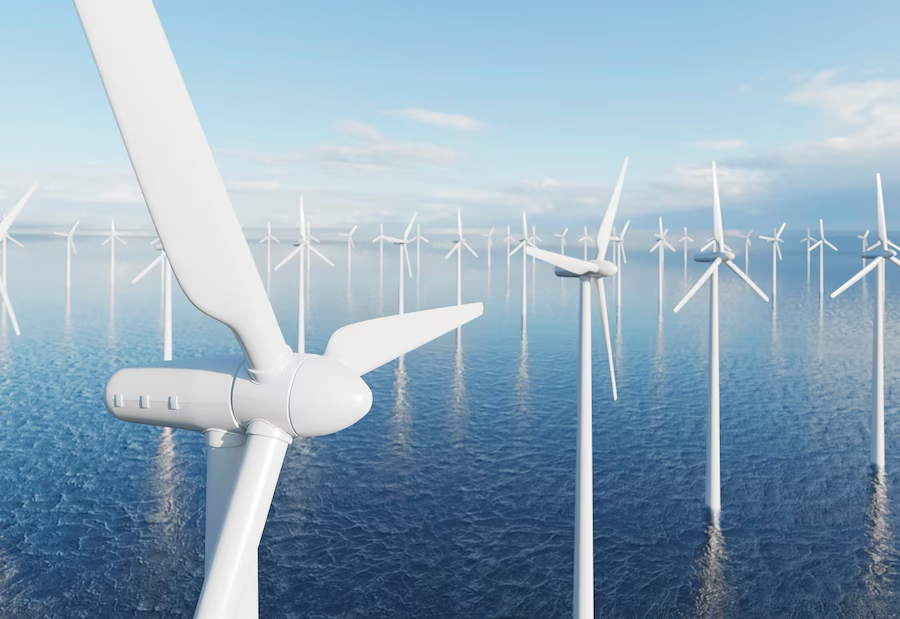
The rise of offshore wind farms
Offshore wind farms are increasingly shaping the global energy landscape. As nations strive to combat climate change, investments in renewable energy sources have surged. Offshore wind, in particular, has emerged as a powerful way to capture the energy of ocean winds and provide cleaner energy for growing urban areas. The benefits of offshore wind, alongside advancing technology, are setting the stage for this sector to play a major role in the energy transition.
Advantages of offshore wind farms
Offshore wind farms bring unique benefits that make them attractive to energy planners. For one, winds over the open ocean are generally stronger and more consistent than those on land, allowing for reliable energy production. Unlike onshore farms, offshore turbines can be much larger, capturing more wind and generating more power. This is especially valuable for densely populated coastal regions, where the demand for electricity is high, and land space is scarce.
Another advantage is that offshore farms avoid visual and noise concerns for residents. Since they are located miles out at sea, these farms don’t disrupt daily life or scenic landscapes. This separation helps maintain the balance between expanding renewable energy and preserving the quality of life in coastal communities.
For urban areas along the coast, offshore wind can supply significant amounts of clean energy directly to the grid, cutting down on transmission losses. As demand for green energy grows, the strategic location of offshore farms makes them a key player in sustainable city planning.
Technological advancements driving growth
In recent years, technology has fueled offshore wind’s expansion. Turbines are now more efficient and durable, with innovative blade designs that capture even low wind speeds. Floating turbines have revolutionized the sector by making it possible to place wind farms in deeper waters, where winds are often stronger. This innovation has opened new areas for energy production, particularly for countries with limited shallow coastlines.
These advancements also drive down costs, making offshore wind more competitive with fossil fuels. Larger turbines capture more energy per unit, reducing the need for extensive infrastructure. Governments and private companies are investing in these projects as technology makes them more feasible and cost-effective, encouraging a shift toward offshore wind in national energy plans.
Environmental impact and challenges
While offshore wind farms offer clean energy, they do present environmental challenges. Marine ecosystems can be sensitive to the installation and operation of these structures. Noise from construction can disturb fish and marine mammals, while birds risk collision with the turbine blades. However, most projects are designed with environmental safeguards, such as construction timing to avoid breeding seasons and using quieter installation methods.
Maintenance is also demanding, as the ocean environment is harsh and can cause wear on equipment. Regular inspections are essential, and specialized vessels and technology keep turbines operating smoothly over their lifespan. Despite these challenges, the long-term environmental benefits of offshore wind, particularly in reducing carbon emissions, make it a sustainable choice.
Economic benefits and job creation
The economic impact of offshore wind farms extends well beyond energy production. These projects create a significant number of jobs, from the construction phase through to ongoing maintenance. Coastal regions, in particular, benefit from job creation in areas like engineering, logistics, and environmental science. Ports also see increased activity as they adapt to support the needs of offshore wind projects, which can stimulate broader local economic growth.
In addition to direct employment, offshore wind provides economic resilience by reducing dependence on imported fossil fuels. As these farms expand, they support stable job markets and foster regional development. For many governments, the economic potential of offshore wind makes it a compelling addition to national energy strategies.
Offshore wind around the world
Several countries are leading the way in offshore wind development. Europe has been a pioneer, with countries like the UK, Denmark, and Germany hosting large-scale offshore farms. In Asia, China is rapidly expanding its offshore wind capacity as part of its transition to cleaner energy sources. The United States, too, is ramping up efforts, with projects progressing along the East Coast.
The global reach of offshore wind is evident, and as more nations commit to lowering emissions, offshore wind farms are set to become essential components of energy systems. Their strategic locations near urban centers make them ideal for meeting large-scale energy needs without overburdening terrestrial resources.
Future prospects and potential
Looking ahead, the future of offshore wind appears promising. As technology advances, even deeper waters could become viable sites for wind farms, potentially transforming oceanic areas into vast clean energy hubs. Floating turbines, in particular, are expected to play a significant role in expanding offshore wind’s reach.
For offshore wind to thrive, collaboration between governments, industry leaders, and environmental groups is essential. Investment in grid connections, research, and environmental protection measures will ensure that offshore wind farms continue to grow sustainably. This commitment to development can create a future where offshore wind provides a substantial portion of global energy, contributing to a cleaner planet.
